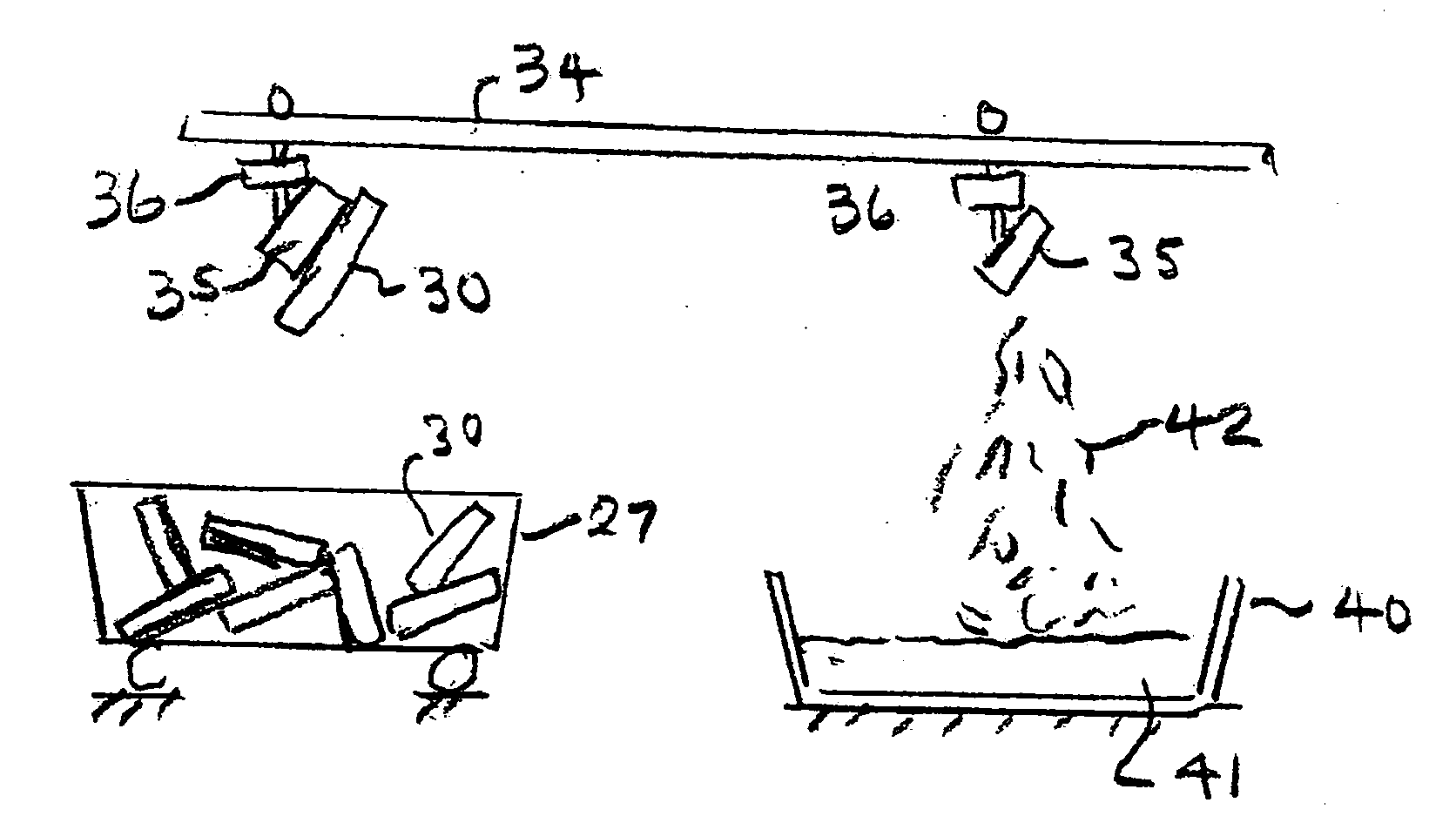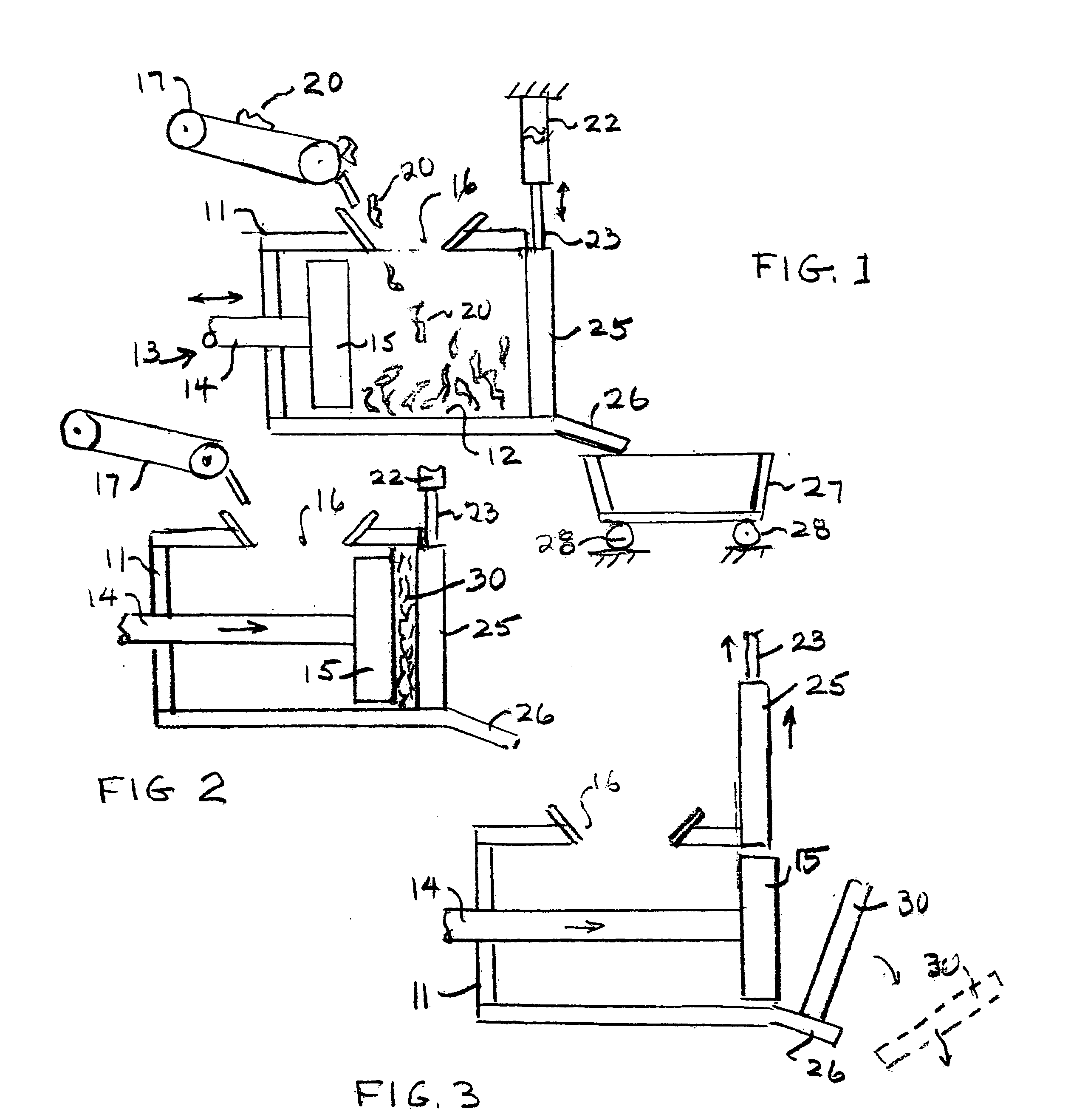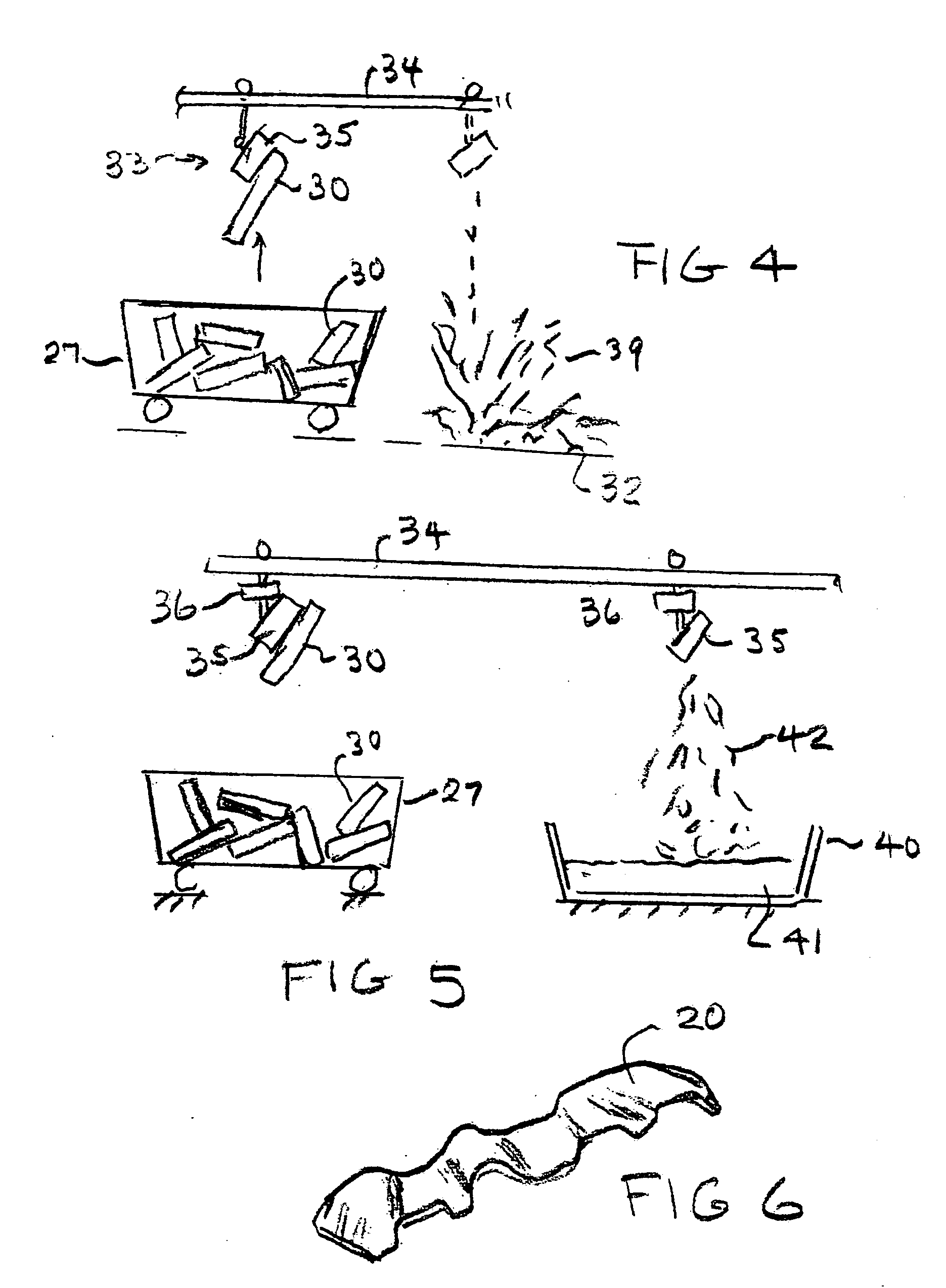Method for transporting bent, irregularly shaped pieces of scrap sheet metal
a technology of scrap sheet metal and scrap metal, which is applied in the direction of press, process efficiency improvement, manufacturing tools, etc., can solve the problems of insufficient force to withstand secondary impact or force, and achieve the effect of reducing the volume of space occupied, reducing the cost of transportation, and simplifying processing
- Summary
- Abstract
- Description
- Claims
- Application Information
AI Technical Summary
Benefits of technology
Problems solved by technology
Method used
Image
Examples
Embodiment Construction
[0023]The attached drawings schematically illustrate a compacter 10 which comprises a housing 11 within which a compression chamber 12 is provided. A reciprocating ram 13, preferably powered by a suitable hydraulic system, not shown, includes a drive shaft 14 upon which a ram pressure head 15 is mounted. The ram reciprocates within the housing and through the compression chamber as will be described below.
[0024]The housing has an entrance hopper 16 located beneath the exit portion of a feed conveyor 17. The conveyor 17 may consist of a number of conveyors, arranged end to end, which carry scrap metal pieces from within a factory building containing manufacturing equipment, such as stamping presses, punch presses, shears, etc. which, in one way or another, operates upon sheet material and in so doing produces scrap in the form of trimmings, punched out portions, etc. Pieces of scrap designated by the numeral 20 (see FIG. 6), resulting from the industrial process within the factory, a...
PUM
| Property | Measurement | Unit |
|---|---|---|
| width | aaaaa | aaaaa |
| height | aaaaa | aaaaa |
| pressure | aaaaa | aaaaa |
Abstract
Description
Claims
Application Information
 Login to View More
Login to View More - R&D
- Intellectual Property
- Life Sciences
- Materials
- Tech Scout
- Unparalleled Data Quality
- Higher Quality Content
- 60% Fewer Hallucinations
Browse by: Latest US Patents, China's latest patents, Technical Efficacy Thesaurus, Application Domain, Technology Topic, Popular Technical Reports.
© 2025 PatSnap. All rights reserved.Legal|Privacy policy|Modern Slavery Act Transparency Statement|Sitemap|About US| Contact US: help@patsnap.com



